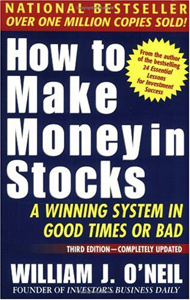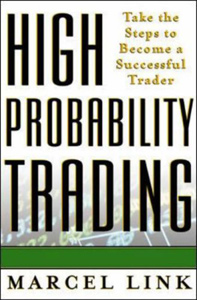Glossary of Stock Trading and Investment Terminology
A non-renounceable rights issue is when a company offers its shareholders the right to purchase more of the company's stock, usually at a discount to market rate. Compared to renounceable rights, the offer is not transferable to other parties and cannot be bought or sold. Issuing more shares of a stock dilutes the value of current outstanding stock on the market.
Trading warrants are the securitised warrants that are traded like stocks in the Australian Stock Exchange (ASX). Trading warrants can be classified into two categories:
- Calls
- Puts
One of the positive things about trading warrants is that they are traded in ASX just like shares, which is not the case for futures and options. If you are one of those traders who look forward to take advantage of the short-term changes in price, warrants should be the ideal option to go for.
In case of Direct Market Access (DMA), both the CFD prices and liquidity remains equal to the underlying market. This is why traders or investors can enter positions at the identical market price when it comes to direct market access. Investors who follow this particular model are termed as the DMA CFD traders.
Allocated Pension
The concept of Allocated Pension is gaining popularity among retirees in Australia. Allocated pension allows a retiree to enjoy the sum of their superannuation and use it as capital for investment. With Allocated pension scheme, retirees can enjoy a regular stream of income from their superannuation funds quarterly, monthly, half yearly or yearly over a period of time that approximates to the life expectancy. The other term that closely relates to allocated pension is account based pension or annuity.
The Basic Attributes of an Allocated Pension
Also referred to as "beta coefficient," beta is a number describing the relation of returns compared with that of the market. It measures an investment’s volatility and indicates sensitivity of a stock’s rate of return. For example, a beta higher than 1 means higher price volatility than market volatility. A beta below 1 means lower price volatility than the market. The beta coefficient is an important element in the Capital Asset Pricing Model (CAPM).
The theory of efficient-market hypothesis (EMH) argues that the financial markets are efficient and the price of stocks constantly reflects all the available information. EMH suggests that no particular investor has access to any information that is not available to other traders. Therefore, a trader cannot make profit at the expense of another.
BRIC is an acronym for the group of four big emerging economies - Brazil, Russia, India and China, also called the "Big Four." For many businesses, these countries represent very good expansion opportunities due to low production costs. In 2003, Goldman Sachs reported that India and China could become the world’s biggest providers of services and manufactured goods while Russia and Brazil could turn into the main raw material suppliers.
The study of charts in order to predict the future movement of prices is termed as the Technical analysis. People who conduct such studies are known as technical analysts who analyse factors like the historic market data, mostly volume and price.
Just like the equity market, Forex is also quoted by the bid and ask prices where the difference or gap between the bid and ask is termed as the “Spread”. It is important to keep in mind that Forex trading is not commission free. As far as the Forex is taken under consideration, the brokers might come up with the claim that they do not charge any typical brokerage but instead of that, the commission is added in the spread.
Derivatives are financial instruments whose value are dependent on or derived from the price of some other underlying asset (usually bond, currency, equity or commodity). Options, futures, forwards and swaps are some of the common form of derivatives. Most of the derivatives are characterised by greater leverage.
- How to Trade Forex and Gold Options
- How to Trade the Gold Price and Profit!
- Forex Trading the EUR/USD Pair € EURO and $ US Dollar
- How to Trade Stock Market Indices S&P500
- How to Trade Crude Oil
- Forex Trading Psychology
- What Are Broker Recommendations?
- Free Tickets to Trading & Investing Seminar & Expo ($18) Brisbane 2013
- Stock Calc App
- All About Warrants
- Introduction to Exchange Traded Funds
- Introduction to Exchange Traded Funds: Features
- Introduction to Exchange Traded Funds: Domestic ETFs
- Introduction to Exchange Traded Funds: International ETFs
- Exchange Traded Commodities
- Australian Stock Scan
- Australian Online Share Trading
- List of Trading Books
- Interesting Thoughts about the Australian Dollar
- What's the Meaning of Hawkish?
- Do You Know How To Use the P/E Ratio
- Trading, Religion and Politics - Do They Have Anything in Common?
- Shares that are Volatile that Double and Half in the Short Term
- Telstra (TLS) T3
- Margin Call by E-mail
- The Cost of Holding a Position
- Lack of Disclosure: Compensation from ASX Listed Company
- Unrealistic Returns and Benchmarks
- CMC Markets Down
- Quality versus Quantity Forex Trading
- Woolworths 1H Sales $30.7bn up 3.2%
Date added 31-01-2013 - ASIC Fines CommBank's CommSec
Date added 25-09-2012 - Industry Super Network Calls to Ban High Frequency Trading (HFT)
Date added 22-09-2012 - NAB Launches Online Share Trading Platform
Date added 19-09-2012 - Reserve Bank of Australia Says 23 Countries Holding AUD
Date added 18-09-2012 - Australia Post Digital Mailbox
Date added 10-09-2012 - Winners and Losers of Trading for Week 2
Date added 16-01-2012 - 2012's First Week of the Best and Worst Traded Stocks
Date added 09-01-2012 - 2011's Last Best and Worst Traded Stocks
Date added 05-01-2012 - Best and Worst Pre-Christmas Traded Stocks
Date added 30-12-2011 - Trading Winners and Losers for Dec. 12-16
Date added 19-12-2011 - Best and Worst Traded Stocks for Dec. 5-9
Date added 13-12-2011 - Top 3 Best and Worst Traded Stocks
Date added 05-12-2011 - ASX Glitch Trading Halt
Date added 27-10-2011 - Worst Trade Stocks (and the Best)
Date added 06-08-2011
Top 150 Public Companies Listed on the Australian Stockmarket as at 29/05/2009
- BHP Billiton
- Westpac Banking Corporation (WBC)
- Commonwealth Bank of Australia (CBA)
- National Australia Bank (NAB)
- Telstra (TLS)
- ANZ
- News Corporation (NWS)
- Woolworths Limited(WOW)
- Woodside Petroleum Limited (WPL)
- Rio Tinto
- Westfield Group (WDC)
- Westfarmers Limited (WES)
- QBE Insurance
- CSL
- Newcrest Mining Limited (NCM)
- Origin Energy Limited (ORG)
- Santos Limited (STO)
- AMP Limited (AMP)
- Macquarie Group (MQG)
- Foster’s Group Limited (FGL)



